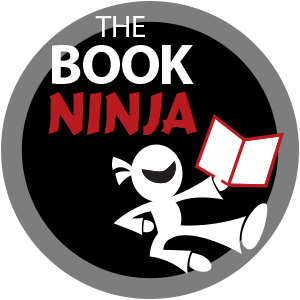You probably know there’s more than one way to get published – in fact, that’s probably one more thing to confuse you and keep you from making a decision to get that book done.
All your choices can be broken down into three primary publishing options, and a variety of types within each option: traditional, vanity, and indie. Each option has its pros and cons, so here they are defined and broken down (finally!) in plain English:
Traditional, Vanity (paid-for or “free” self-publishing), Indie (starting a publishing arm to your existing business, or starting your own publishing company from scratch) & straight to Kindle/eBook. Each one has a variety of pros & cons, & I can easily talk an hour on each one. Here’s the quick basics:
Traditional Publishing
- Pros: Ego boost, advance, some marketing assistance (much more if you’re not a first-time author and have proven book sales under your name)
- Cons: 3 to 5 year timeline to get accepted, must pay for own marketing if first-time author, give up most of your rights
When to go traditional: If you already have a large platform of followers, consistent marketing for a business, or if you’re writing fiction in a rapidly-growing genre.
When not to go traditional: If your message is timely in nature, you don’t want to give up your repurposing rights or rights to write future books, or if you’re an entrepreneur who likes things your way.
Traditional publishing typically involves getting an agent and a book deal. It’s like a slow-cooked roast. It takes a while to get there, but it sure tastes good! If you’re interested in traditional publishing, start with the book The Writer’s Market, which comes out with a new addition every year.
Vanity “Self” Publishing
- Pros: Fast, sometimes cheap, easy (sometimes too easy)
- Cons: A “middle man” takes $3-4 profit from every book sale – after you’ve already paid an upfront fee, your book won’t meet the requirements to get into bookstores, limited marketability, often looks cheap
When to go vanity: If you have to get something done fast and quality is secondary to investment and speed, if you don’t want to handle any of the details like filling orders yourself, if you simply want a promotional item for your business, or if you’re writing fiction and are sick of rejection letters.
When not to go vanity: If you care about your distribution rights, if you want to sell your book to a traditional publisher someday, if you value quality over investment and speed, if you want to maximize your marketability – especially through bookstores, or if you want to speak on the stage.
Vanity publishing comes in many forms, and not all of them are scams. Vanity publishers serve a purpose and are best used for the genres of poetry, short stories, fiction, or if you want a fast, cheap promo item for your business. It’s like a hot dog – quick and will satisfy your immediate needs.
Independent (Indie) Publishing
- Pros: Fast, no middle man to take any profits from book sales, more marketability including bookstores, total control over your project, higher credibility to speak from the stage/charge more for coaching.
- Cons: Initial investment due to higher quality product, more responsibility in choosing your team, higher learning curve if you go it alone
When to go indie: If you need something fairly quickly and care more about quality than investment, if you care about your distribution and repurposing rights, if you want to maximize your marketability through bookstores and other mainstream channels, if you want to speak on a high-dollar stage, or if you want to raise your prices for your business services.
When not to go indie: If you have a very small budget, if you’re publishing in the genres of fiction, short stories, memoir, poetry or a quick business promotional item, if you don’t want to tackle a learning curve or work with a team.
Indie publishing literally involves starting your own business. Much like filet mignon, it takes a little longer to “cook” than a hot dog, tastes better, and typically has longer-lasting results.
I can easily talk in-depth for hours on all these options, but this should give you an idea of what type to use for which goals you have for your book. Defining your goals is extremely important. If you opt for a hot dog expecting the results of filet mignon, you’ll be sorely disappointed. Know your goals, then choose your publishing option.


Indie publishing is definitely a higher initial investment. It has slowed me down on publishing my third book… However, the quality and ease, at least when working with Kristen, justifies some cost if you don’t have the time needed to learn the process.
Hmmm…
When to go traditional: If you already have a large platform of followers, consistent marketing for a business, or if you’re writing fiction in a rapidly-growing genre.
Really? I’ll have to disagree with you on this. If people will buy your books already, then why not keep most of the money?
Am I missing something?
Love the new Disqus comments, BTW.
Thanks Phil! You have to disagree because you’re an entrepreneur to the core! 😉 My thought is that most people who try to go traditional and have a big platform will still get frustrated and end up indie published. However, for fiction traditional is still the best bet – or Indie with Amazon’s Direct to Kindle. Nowadays more fiction is being published traditionally and more non-fiction is being self-published.
I try. 🙂
I know nothing about fiction so I’ll leave it to you.